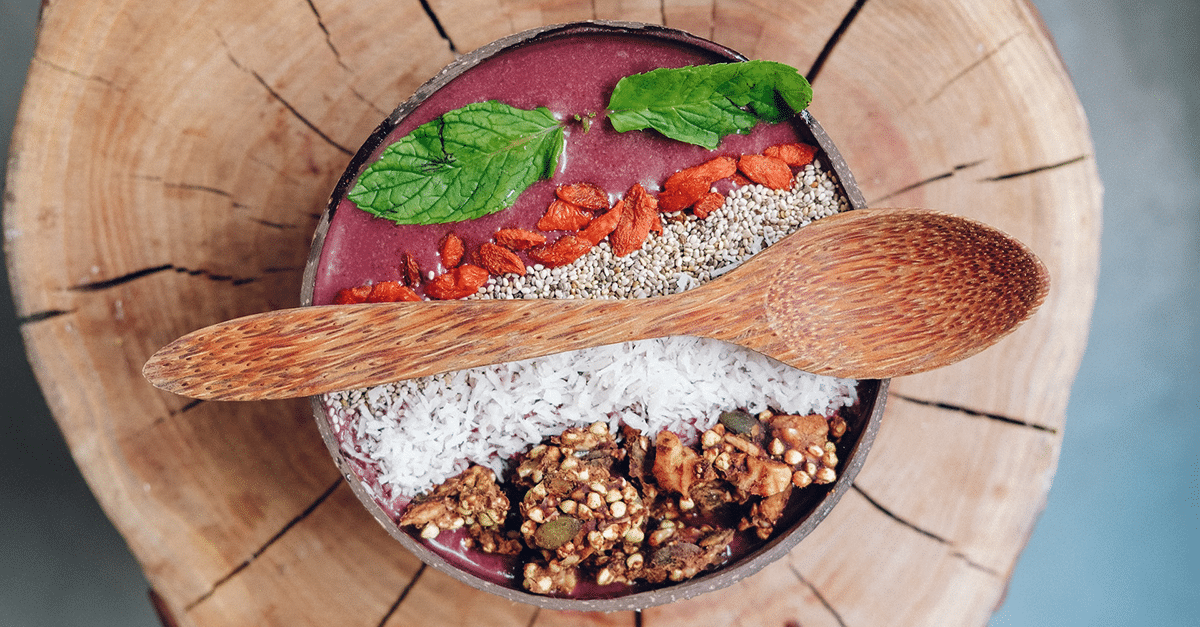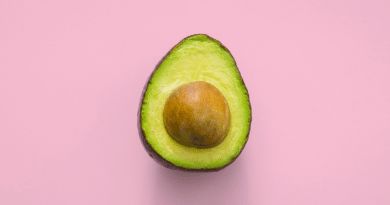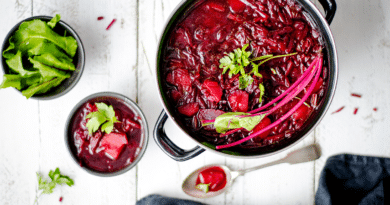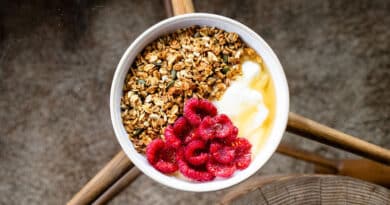The Power of Superfoods: Uncovering the Nutritional Wonders of Acai, Goji Berries, and Maca
Superfoods have gained significant attention and popularity in recent years, as people become more conscious of their health and well-being.
These remarkable foods have captured the imaginations of health enthusiasts and nutritionists alike, with their reputation for providing an abundance of essential nutrients and health-promoting properties.
In a world where processed and convenience foods dominate our diets, the importance of incorporating nutrient-rich foods cannot be overstated. Our bodies require a wide range of vitamins, minerals, antioxidants, and other vital nutrients to function optimally and maintain good health. Unfortunately, many of the foods we consume daily fall short in delivering these essential elements.
This is where superfoods come into the picture. These nutritional powerhouses are often packed with a concentrated dose of beneficial compounds, offering a natural and convenient way to enhance our diets and boost overall health. By adding superfoods to our meals and snacks, we can introduce a wide variety of nutrients that may be lacking in our regular food choices.
Superfoods not only provide an array of essential vitamins and minerals but also offer unique health benefits. They are often rich in antioxidants, which help protect our bodies against harmful free radicals and oxidative stress. Additionally, superfoods may possess anti-inflammatory properties, support immune function, improve digestion, enhance brain health, and contribute to weight management.
Incorporating superfoods into our diets can be a powerful step toward optimizing our nutritional intake and promoting long-term well-being. By making conscious choices to include these nutrient-dense foods in our meals, we can take an active role in supporting our bodies’ needs and achieving optimal health outcomes.
In the following sections, we will delve into the fascinating world of three remarkable superfoods: acai berries, goji berries, and maca. By exploring their origins, nutritional profiles, and health benefits, we will uncover the unique wonders these foods have to offer. So, let us embark on this journey and discover the power of superfoods in transforming our diets and our lives.
What are Superfoods?
Superfoods are a category of nutrient-dense foods that are considered exceptionally beneficial for our health and well-being. They are often rich in essential vitamins, minerals, antioxidants, and other bioactive compounds that have been shown to support various bodily functions and promote overall vitality.
What sets superfoods apart from regular foods is their remarkable concentration of nutrients. While all fruits, vegetables, whole grains, and lean proteins provide essential nutrients, superfoods go the extra mile by offering exceptionally high levels of specific beneficial components. This high nutrient density makes them a valuable addition to any diet, particularly for individuals looking to optimize their nutritional intake.
Superfoods come in various forms, including fruits, vegetables, seeds, nuts, whole grains, and even certain spices. Each superfood has its own unique nutritional profile, with specific vitamins, minerals, and antioxidants that contribute to its health-promoting properties. For instance, some superfoods may be particularly rich in vitamin C, while others may excel in providing essential fatty acids or plant-based proteins.
The consumption of superfoods has been linked to a range of health benefits. The abundance of antioxidants found in many superfoods helps combat oxidative stress and reduce the risk of chronic diseases, such as heart disease, cancer, and neurodegenerative disorders. These foods also support immune function, promote healthy digestion, enhance brain health and cognitive function, aid in weight management, and contribute to glowing skin and overall vitality.
Incorporating superfoods into our diets can be a proactive step toward achieving and maintaining optimal health. By including these nutrient powerhouses in our meals, we can easily increase our intake of essential vitamins and minerals, boost our antioxidant defences, and support various bodily functions. Whether we are seeking to improve our energy levels, enhance our immune system, or simply nourish our bodies with wholesome goodness, superfoods offer a natural and effective solution.
It’s important to note that while superfoods can be highly beneficial, they are not a magical cure-all. They should be consumed as part of a balanced and varied diet that includes a wide range of whole foods. Furthermore, it’s crucial to focus on the overall dietary pattern rather than relying solely on individual superfoods. By adopting a well-rounded approach to nutrition, incorporating superfoods can contribute to a holistic and nourishing lifestyle.
In the upcoming sections, we will explore three notable superfoods: acai berries, goji berries, and maca. By understanding their unique nutritional properties and the role they play in promoting health and well-being, we can unlock the potential of these extraordinary foods and harness their benefits in our daily lives.
Acai: The Amazonian Antioxidant Powerhouse
Origin and cultural significance of acai
Originating from the lush rainforests of the Amazon, acai (pronounced ah-sigh-EE) has been a staple food for the indigenous people of Brazil for centuries. The acai palm tree, scientifically known as Euterpe oleracea, bears small, dark purple berries that are harvested and used for their nutritional and medicinal properties.
Acai holds great cultural significance among the indigenous communities of the Amazon. Traditionally, the berries were consumed as a dietary staple and were believed to provide energy, strength, and overall vitality. Acai also played a role in religious and ceremonial practices, symbolizing the life-giving powers of the rainforest.
Nutritional profile of acai berries
Acai berries are renowned for their exceptional nutritional composition. They are a rich source of essential nutrients, including dietary fibre, healthy fats, vitamins, and minerals. Acai berries are particularly notable for their high antioxidant content, surpassing that of many other fruits.
In terms of macronutrients, acai berries are relatively low in sugar and carbohydrates but contain a moderate amount of healthy fats, primarily in the form of monounsaturated fatty acids, such as oleic acid. These beneficial fats contribute to heart health and may help reduce harmful cholesterol levels.
Acai berries are also a good source of dietary fibre, which aids in digestion, supports healthy blood sugar levels, and promotes feelings of fullness and satiety. Additionally, acai berries contain essential vitamins and minerals, including vitamin A, vitamin C, vitamin E, and potassium.
Health benefits of acai, including its antioxidant properties and role in promoting heart health
One of the key health benefits associated with acai berries is their remarkable antioxidant activity. Acai berries are packed with anthocyanins, a type of flavonoid antioxidant responsible for their deep purple colour. These antioxidants help neutralize harmful free radicals, protecting our cells from oxidative damage and reducing the risk of chronic diseases.
The potent antioxidant capacity of acai berries may have far-reaching effects on our health. Studies suggest that acai berries may help combat inflammation, support a healthy immune system, and contribute to brain health by protecting against oxidative stress in the brain.
Acai berries also show promise in promoting heart health. The antioxidants found in acai berries have been associated with a lower risk of heart disease, as they can help reduce oxidative stress and inflammation, improve blood flow, and support healthy cholesterol levels. However, it’s important to note that acai berries should be part of an overall heart-healthy lifestyle that includes a balanced diet and regular physical activity.
Ways to incorporate acai into your diet
In recent years, acai has gained popularity as a versatile ingredient in various culinary creations. One popular way to enjoy acai is through acai bowls. These refreshing and nutritious bowls typically consist of a thick acai smoothie base topped with a variety of fruits, nuts, seeds, and granola. Acai bowls offer a visually appealing and satisfying meal or snack that is packed with antioxidants, fibre, and essential nutrients.
Another popular option is adding acai to smoothies. Acai berries are available in frozen puree or powder form, making them easily blendable with other ingredients like fruits, leafy greens, yogurt, or nut milk. This creates a delicious and nutrient-rich smoothie that can be enjoyed as a quick breakfast or post-workout replenishment.
Acai can also be incorporated into desserts, such as popsicles, sorbets, or even homemade energy bars. Its rich, fruity flavour adds a unique twist to these treats while providing a nutritional boost.
Goji Berries: The Tibetan Miracle Fruit
History and traditional use of goji berries
Goji berries, also known as wolfberries, have a rich history deeply rooted in traditional Chinese and Tibetan medicine. These small, bright red berries grow on the Lycium barbarum and Lycium chinense plants, which are native to the Himalayan regions of Tibet and China. For centuries, goji berries have been valued for their medicinal properties and have been an integral part of Asian herbal practices.
In traditional Chinese medicine, goji berries are revered as a “tonic” herb, believed to nourish and replenish the body, strengthen the immune system, and promote overall well-being. They have been used to support various bodily functions, including liver health, vision, and vitality.
Nutritional composition of goji berries
Goji berries are packed with an impressive array of nutrients, making them a true superfood. They are a rich source of vitamins, minerals, antioxidants, and phytonutrients.
These berries are an excellent source of vitamin C, providing more vitamin C per serving than oranges. Vitamin C is essential for a strong immune system, collagen production, and overall cellular health.
Goji berries are also a good source of antioxidants, particularly carotenoids such as beta-carotene and zeaxanthin. These antioxidants help protect our cells from oxidative stress, support eye health, and have been associated with a reduced risk of age-related macular degeneration.
Additionally, goji berries contain a range of vitamins and minerals, including vitamin A, vitamin B2 (riboflavin), vitamin B6, iron, and selenium. They also provide dietary fibre and essential amino acids, making them a nutritionally dense addition to any diet.
Health benefits of goji berries
Goji berries offer numerous health benefits, thanks to their powerful combination of nutrients and bioactive compounds. One notable benefit is their ability to support the immune system. The antioxidants in goji berries help strengthen the body’s defences, protecting against oxidative damage and promoting a healthy immune response. This can help reduce the risk of infections and support overall immune function.
Goji berries are also renowned for their potential to promote eye health. The presence of carotenoids, particularly zeaxanthin, in goji berries is beneficial for maintaining good vision and protecting the eyes from damage caused by harmful blue light and oxidative stress. Regular consumption of goji berries has been associated with a reduced risk of age-related eye diseases.
Furthermore, goji berries may have anti-inflammatory properties and can contribute to a healthy cardiovascular system. Some studies suggest that goji berries may help reduce inflammation in the body, which is a key factor in the development of chronic diseases. Additionally, the antioxidants in goji berries may help improve heart health by reducing oxidative stress and supporting healthy blood pressure levels.
Creative ways to enjoy goji berries
Goji berries have a mildly sweet and tangy flavour, making them a versatile ingredient in various culinary preparations. Here are some creative ways to enjoy goji berries:
Trail mix: Add goji berries to your favourite trail mix for a burst of sweetness, texture, and nutritional goodness. Combine them with nuts, seeds, dried fruits, and dark chocolate for a satisfying and energizing snack.
Smoothies and juices: Blend goji berries into your favourite smoothie or juice for an added nutritional boost. They pair well with other fruits, leafy greens, and plant-based milk.
Baked goods: Sprinkle goji berries onto oatmeal cookies, muffins, or bread dough before baking. The berries will add a delightful chewiness and a
Maca: The Andean Energy Booster
Maca and its historical use in Peru
Maca, scientifically known as Lepidium meyenii, is a root vegetable that has been cultivated and consumed in the Andean region of Peru for thousands of years. It is often referred to as the “Peruvian ginseng” due to its reputation as an adaptogen—a substance believed to help the body adapt to stress and promote overall balance.
Maca holds significant cultural and historical importance in Peru, where it has been used for its medicinal properties and as a dietary staple. In ancient times, maca was highly regarded for its ability to enhance fertility, boost energy levels, and improve stamina in warriors. Today, it continues to be celebrated as a powerful superfood with numerous health benefits.
Nutritional components of maca root
Maca root is rich in various essential nutrients, making it a valuable addition to a balanced diet. It is a good source of vitamins, minerals, amino acids, and plant compounds.
Maca is particularly abundant in B-vitamins, including vitamin B6, niacin, and riboflavin, which play vital roles in energy production, brain function, and hormone regulation. It also contains significant amounts of calcium, iron, potassium, zinc, magnesium, and phosphorus, supporting bone health, muscle function, and overall vitality.
Additionally, maca root is rich in fibre, which aids in digestion, supports gut health, and helps maintain stable blood sugar levels. It is low in fat and contains a fair amount of plant-based protein, making it a suitable choice for individuals following a vegetarian or vegan diet.
Health benefits of maca
Maca offers a range of health benefits, many of which can be attributed to its unique nutritional profile. Here are some key advantages associated with maca consumption:
Hormone balancing: Maca is known for its potential to balance hormones in both men and women. It can support reproductive health by regulating menstrual cycles, alleviating symptoms of menopause, and boosting fertility. In men, maca has been reported to enhance libido, improve sperm quality, and promote healthy testosterone levels.
Increased energy and stamina: Traditionally used by indigenous Andean populations to enhance endurance and combat fatigue, maca is believed to provide a natural energy boost. Its combination of B-vitamins, minerals, and adaptogenic properties may help increase stamina, improve athletic performance, and reduce feelings of tiredness and lethargy.
Enhanced mood and mental well-being: Maca has been associated with mood improvement and enhanced mental well-being. It may help reduce symptoms of anxiety and depression, promote cognitive function, and support overall emotional balance.
Antioxidant and anti-inflammatory effects: The antioxidants found in maca root, such as polyphenols and flavonoids, help protect cells from oxidative stress and reduce inflammation. This can contribute to a lower risk of chronic diseases, including heart disease, diabetes, and certain types of cancer.
Suggestions for incorporating maca into your daily routine
Incorporating maca into your daily routine is easy and can add a nutritional boost to your meals and snacks. Here are some suggestions for enjoying maca:
Smoothies: Add a teaspoon or two of maca powder to your favourite smoothie recipe. It pairs well with fruits like bananas, berries, and mangoes, as well as leafy greens, nut butters, and plant-based milk. The earthy, slightly nutty flavour of maca blends seamlessly into smoothies.
Baked goods: Incorporate maca powder into homemade granola bars or energy balls
Superfood Comparison and Selection Tips
Acai, goji berries, and maca: similarities and differences
While acai, goji berries, and maca are all classified as superfoods due to their exceptional nutritional profiles, they each have unique characteristics and benefits.
- Acai berries are known for their high antioxidant content, particularly anthocyanins, which contribute to their deep purple colour. They offer potential benefits for heart health, immune function, and brain health.
- Goji berries, on the other hand, are rich in antioxidants like carotenoids, including zeaxanthin, which promotes eye health. They are also recognized for their immune-boosting properties and may support heart health.
- Maca, a root vegetable, stands out for its hormone-balancing properties and potential to enhance energy and stamina. It contains various vitamins, minerals, and amino acids, making it a valuable addition to support overall well-being.
Factors to consider when choosing and incorporating superfoods into your diet
When selecting and incorporating superfoods into your diet, consider the following factors:
Nutritional needs: Identify the specific nutrients you aim to incorporate into your diet. Each superfood has its own nutritional profile, so choose the ones that align with your goals and address any nutritional gaps you may have.
Personal preferences: Superfoods can be enjoyed in various forms, such as powders, frozen fruits, or whole foods. Consider your taste preferences and explore different ways to incorporate superfoods into your meals that align with your preferences.
Availability and sourcing: Ensure the availability and quality of the superfoods you choose. Look for reputable sources that offer organic or sustainably sourced options to maximize the nutritional benefits and minimize potential contaminants.
Variety and balance: Remember that superfoods are meant to complement a well-rounded diet. Focus on incorporating a variety of superfoods and other nutrient-dense foods to achieve a balanced nutritional intake.
Potential side effects or precautions associated with consuming superfoods
While superfoods are generally safe and offer numerous health benefits, it’s important to be aware of potential side effects and precautions:
Allergies: Some individuals may have allergies or sensitivities to certain superfoods. Be cautious if you have known allergies to similar foods or consult with a healthcare professional before introducing new superfoods into your diet.
Interactions with medications: Certain superfoods, such as acai and goji berries, may interact with specific medications. If you are taking any medications, especially blood thinners or medication for diabetes, consult with your healthcare provider to ensure there are no potential interactions.
Digestive issues: Introducing new superfoods into your diet may cause digestive discomfort for some individuals. Start with small amounts and gradually increase the serving size to allow your body to adjust.
Recommended serving sizes and frequency for optimal benefits
The recommended serving sizes and frequency of consuming superfoods may vary depending on the specific superfood and individual needs. It’s generally recommended to follow these guidelines:
Acai berries: A typical serving of acai berries is around 1-2 tablespoons of acai powder or 100-200 grams of frozen acai puree. Incorporate acai into your diet a few times per week to enjoy its benefits.
Goji berries: Aim for 1-2 tablespoons of goji berries per day. They can be enjoyed as a snack, added to trail mixes, or sprinkled onto cereals and salads.
Maca: Start with 1 teaspoon of maca powder per day and gradually increase to 1-2 tablespoons. It can be added to smoothies, oatmeal, or baked goods. Take regular breaks from consuming maca to prevent overconsumption.
Conclusion
In conclusion, acai, goji berries, and maca are exceptional superfoods that offer a plethora of nutritional benefits. Acai berries stand out for their antioxidant properties and potential to support heart health, while goji berries are renowned for their immune-boosting effects and eye health promotion. Maca, on the other hand, is known for its hormone-balancing properties and ability to enhance energy and stamina.
By incorporating these superfoods into your diet, you can tap into their unique nutritional wonders. Whether you enjoy them in smoothies, bowls, baked goods, or as standalone snacks, the versatility of these superfoods allows for creative and delicious ways to reap their benefits.
It is important to remember that superfoods should be part of a balanced diet that includes a variety of nutrient-dense foods. Each individual’s nutritional needs may differ, so it’s crucial to identify your specific goals and consult with a healthcare professional if you have any underlying health conditions or concerns.
By exploring and incorporating acai, goji berries, maca, and other superfoods into your daily routine, you can enhance your overall health and vitality. These nutrient powerhouses can contribute to improved immune function, hormone balance, increased energy, and more.
Embrace the wonders of these superfoods and discover how they can elevate your well-being. Whether you start your day with an acai bowl, sprinkle goji berries on your trail mix, or add maca to your morning smoothie, the possibilities are endless. Enjoy the journey of nourishing your body with these remarkable superfoods and witness the positive impact they can have on your health.
Remember, superfoods are just one component of a holistic approach to wellness. Alongside a balanced diet, prioritize regular physical activity, adequate sleep, and stress management to achieve optimal health and vitality. Embrace the power of superfoods and unleash the potential for a healthier, more vibrant you.
Learn More
| Marjoram vs Oregano: Health Benefits |
| Guide to Fats |
| Complex Carbohydrates for Vegans |
| Health Benefits of Basil |
| How to lower your cholesterol |
Studies
Acai:
Schauss AG, Wu X, Prior RL, et al. Antioxidant capacity and other bioactivities of the freeze-dried Amazonian palm berry, Euterpe oleraceae mart. (acai). J Agric Food Chem. 2006;54(22):8604-8610.
Del Pozo-Insfran D, Percival SS, Talcott ST. Acai (Euterpe oleracea Mart.) polyphenolics in their glycoside and aglycone forms induce apoptosis of HL-60 leukemia cells. J Agric Food Chem. 2006;54(4):1222-1229.
Goji Berries:
Amagase H, Nance DM. A randomized, double-blind, placebo-controlled, clinical study of the general effects of a standardized Lycium barbarum (Goji) Juice, GoChi. J Altern Complement Med. 2008;14(4):403-412.
Chen Z, Kwong Huat BT, Fong WP, et al. Neuroprotective effects of Lycium barbarum Lynn on protecting retinal ganglion cells in an ocular hypertension model of glaucoma. Exp Neurol. 2007;203(1):269-273.
Maca:
Meissner HO, Mrozikiewicz P, Bobkiewicz-Kozłowska T, et al. Hormone-balancing effect of pre-gelatinized organic maca (Lepidium peruvianum Chacon): (III) clinical responses of early-postmenopausal women to Maca in double blind, randomized, placebo-controlled, crossover configuration, outpatient study. Int J Biomed Sci. 2006;2(4):375-394.
Gonzales GF, Gasco M, Malheiros-Pereira A, et al. Antagonistic effect of Lepidium meyenii (red maca) on prostatic hyperplasia in adult mice. Andrologia. 2008;40(3):179-185.




